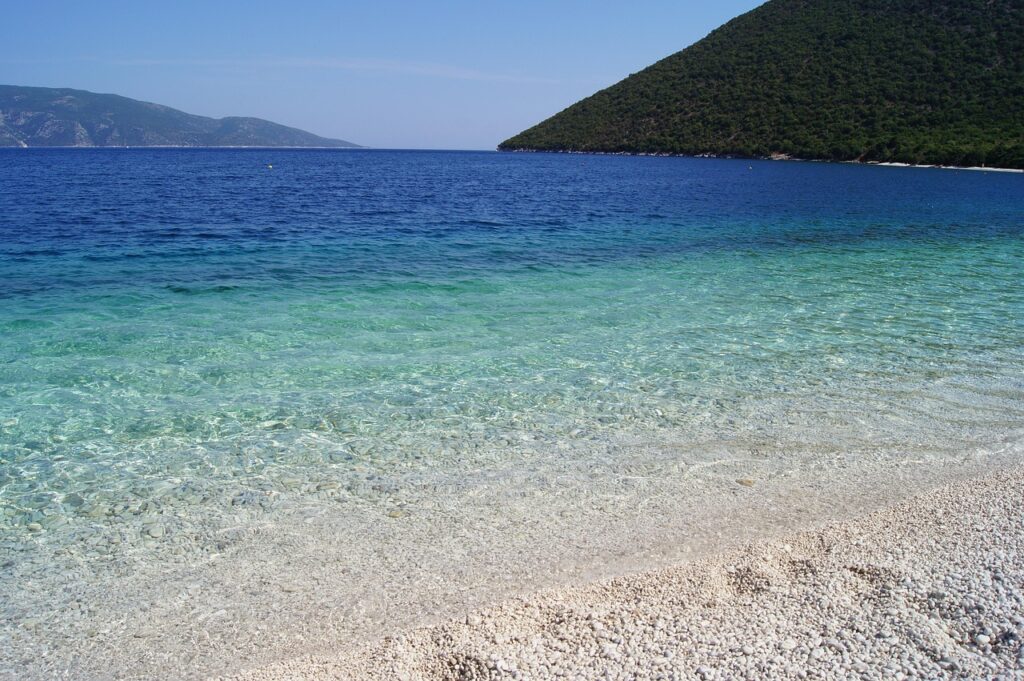When winter hits hard across North America, especially in regions like the Midwest, Northeast, and parts of Canada, having the right pair of boots isn’t just a matter of style — it’s a necessity.
Temperatures can drop far below freezing, and without the proper footwear, you risk frostbite, slips, and soggy feet that make even the shortest walk miserable.
To keep your feet warm, dry, and safe during the harshest months, we’ve created a comprehensive guide on the best winter boots for severe cold.
This article includes essential features to look for, top brand recommendations, and models that balance warmth, waterproofing, grip, and comfort.
Why the Right Winter Boots Matter
Choosing the right winter boots can impact your entire cold-weather experience. Poor quality or ill-suited boots can lead to:
-
Cold feet and toes, which may lead to health concerns in extreme temperatures.
-
Wet socks, due to poor waterproofing or snow entering from the top.
-
Slips and falls, especially on icy sidewalks or packed snow.
-
Discomfort during long walks or outdoor work, due to poor insulation or fit.
Investing in a reliable pair of winter boots means better mobility, safety, and comfort, especially in northern U.S. states or Canadian provinces where winters are long and unforgiving.
Key Features to Look for in Winter Boots
Before diving into specific brands and models, it’s essential to understand the key features that make a winter boot suitable for severe cold:
1. Insulation
Insulation is what keeps your feet warm, even when temperatures drop below -20°F (-29°C). The most common types include:
-
Thinsulate™: Lightweight yet warm, found in many premium boots.
-
Shearling or wool linings: Soft, warm, and natural.
-
Foam insulation: Affordable but less effective in extreme cold.
Look for boots with at least 200g insulation for daily use and 400g to 800g or more for extremely cold environments or extended exposure.
2. Waterproofing
Cold feet are often a result of wet feet. Boots should have:
-
Waterproof materials like treated leather, rubber, or synthetic fabrics.
-
Sealed seams to prevent snowmelt from seeping in.
-
Gusseted tongues to block snow from entering around the laces.
3. Outsole and Traction
Slippery surfaces are a major winter hazard. Your boots should have:
-
Deep lugs for strong grip on snow and slush.
-
Non-slip rubber soles designed for ice and uneven terrain.
-
Vibram® outsoles or similar high-performance materials for added traction.
4. Height and Fit
Taller boots (8–12 inches) provide better snow protection. Make sure they:
-
Cover your ankles to block cold wind and deep snow.
-
Have adjustable closures (laces, buckles, or drawstrings).
-
Leave room for thick socks without cutting off circulation.
Top-Rated Winter Boots for Harsh North American Winters
Here are some of the most highly recommended winter boots for people facing brutal winter weather in North America:
1. Sorel Caribou Boot
-
Temperature Rating: -40°F (-40°C)
-
Best For: Deep snow, wet conditions
-
Insulation: 9mm felt liner (removable)
-
Waterproofing: Seam-sealed leather with a rubber shell
Why it’s great: The Sorel Caribou is a legendary winter boot that combines rugged durability with exceptional warmth. The tall shaft and rubber bottom make it perfect for deep snow, and the removable liner allows for easy drying.
2. Baffin Impact Boot
-
Temperature Rating: -148°F (-100°C)
-
Best For: Arctic-level cold, extreme exposure
-
Insulation: Multi-layer inner boot system
-
Waterproofing: Fully molded rubber base with nylon upper
Why it’s great: Designed for extreme environments like northern Canada and Alaska, this boot is overkill for most people — but essential for those working outdoors or exploring in sub-zero conditions.
3. Columbia Bugaboot™ Plus IV Omni-Heat
-
Temperature Rating: -25°F (-32°C)
-
Best For: Urban use, outdoor treks
-
Insulation: 200g synthetic with Omni-Heat lining
-
Waterproofing: Seam-sealed leather and textile upper
Why it’s great: With a sporty design and reliable insulation, this boot balances function and appearance. Columbia’s Omni-Heat technology reflects body heat, adding a layer of warmth without bulk.
Recommended Winter Boots for Women
Winter boots for women should offer the same protection and performance, but with attention to fit, comfort, and often style.
1. The North Face Shellista IV Mid
-
Temperature Rating: Approx. -25°F (-32°C)
-
Insulation: 200g Heatseeker™ Eco
-
Waterproofing: Suede and synthetic upper, waterproof membrane
Why it’s great: Lightweight and stylish with excellent warmth, this boot is perfect for daily wear in cold urban environments.
2. UGG Adirondack III
-
Temperature Rating: -25°F (-32°C)
-
Insulation: 200g with wool lining
-
Waterproofing: Leather with DryTech bootie construction
Why it’s great: Combines fashion and function. Despite the brand’s reputation for fashion boots, this model is highly practical for real winter weather, offering serious protection in a stylish design.
Budget-Friendly Winter Boots That Still Perform
High-quality winter boots don’t have to come with a high price tag. There are affordable options that still offer reliable warmth and protection in cold weather.
1. Kamik NationPlus
-
Temperature Rating: -40°F (-40°C)
-
Insulation: 200g Thinsulate™
-
Waterproofing: Waterproof leather and rubber shell
-
Average Price: Around $100
Why it’s great: Kamik is known for Canadian-made boots that are both effective and affordable. The NationPlus offers serious cold protection at a price point that’s accessible to most consumers.
2. Totes Men’s Waterproof Snow Boot
-
Temperature Rating: Moderate cold (not rated for extreme sub-zero)
-
Insulation: Thermolite®
-
Waterproofing: Seam-sealed nylon
-
Average Price: Around $60
Why it’s great: Ideal for occasional winter use or urban environments with snow and slush, these boots are lightweight, warm enough for moderate cold, and very budget-friendly.
Winter Boot Maintenance Tips
To make sure your winter boots last multiple seasons and continue to protect your feet effectively, follow these care tips:
1. Dry Your Boots After Each Use
Wet linings and insoles can lead to odor and degrade insulation. After wearing, remove liners (if possible) and allow boots to dry naturally indoors. Avoid placing them directly on heaters, as this can crack the materials.
2. Use Waterproofing Sprays
If your boots are made of suede, leather, or fabric, use a waterproofing spray every few weeks. This maintains their water resistance and extends the life of the material.
3. Clean Off Salt and Dirt
Road salt and slush can damage the materials over time. Wipe your boots down with a damp cloth or brush regularly to prevent buildup.
4. Store Properly in the Off-Season
When winter ends, store your boots in a cool, dry place. Keep them upright and use boot shapers or stuff them with newspaper to help retain their shape.
Choosing the Right Boots Based on Your Region
Winter in North America varies drastically depending on where you live. Here’s a quick regional breakdown to help guide your purchase:
| Region | Winter Conditions | Recommended Boot Type |
|---|---|---|
| Northern U.S. (MN, ND, MI) | Sub-zero temps, deep snow | Heavy-duty insulated boots with tall shafts |
| Northeast (NY, MA, ME) | Snowstorms, icy sidewalks | Insulated, waterproof boots with good traction |
| Pacific Northwest (WA, OR) | Wet and cold, more rain than snow | Waterproof boots with moderate insulation |
| Midwest (IL, OH, WI) | Variable: ice, snow, slush | Waterproof, warm boots with durable soles |
| Canada (QC, ON, AB) | Extreme cold, frequent snow | Arctic-grade boots with thick insulation |
Kids’ Winter Boots: What Parents Should Know
Children are especially vulnerable to cold exposure, so investing in quality boots is crucial. Here’s what to look for:
Key Features for Kids:
-
Temperature rating of -25°F or better
-
Easy to put on/take off (Velcro straps or drawstrings)
-
Non-slip soles for icy playgrounds
-
Waterproof and high-cut to prevent snow from getting in
Top Picks:
-
Sorel Yoot Pac TP: Insulated and durable for deep snow.
-
Bogs Classic High: 100% waterproof and easy to clean.
-
Keen Lumi Boot WP: Lightweight with good traction and insulation.
Comparison Table: Best Winter Boots at a Glance
| Boot Name | Temp Rating | Best Use Case | Waterproof | Avg. Price | Notable Feature |
|---|---|---|---|---|---|
| Sorel Caribou | -40°F | Heavy snow, daily use | Yes | $150–200 | Removable felt liner |
| Baffin Impact | -148°F | Extreme cold, long exposure | Yes | $200+ | Multi-layer insulation |
| Columbia Bugaboot Plus IV | -25°F | Urban, hiking combo use | Yes | $120–150 | Omni-Heat reflective lining |
| UGG Adirondack III (Women) | -25°F | Fashion + function | Yes | $200 | Real wool lining, stylish profile |
| Kamik NationPlus | -40°F | Budget cold-weather option | Yes | $100 | Made in Canada, very durable |
| Totes Waterproof Snow Boot | Moderate | Light use, budget-friendly | Yes | $60 | Lightweight and easy to walk in |
Final Thoughts: Invest in Warmth, Safety, and Comfort
Severe winter weather in North America is no joke. Choosing the right pair of winter boots can mean the difference between a comfortable, safe winter and one filled with cold toes, slips, and regrets. The best winter boots combine:
-
Warmth to protect against freezing temperatures
-
Waterproofing to keep feet dry
-
Traction to prevent falls on snow and ice
-
Comfort and fit for long hours of wear
Whether you’re facing sub-zero temperatures in Minnesota, icy sidewalks in New York City, or Arctic conditions in northern Canada, the boots on this list are built to handle the challenge.
Ready to gear up for winter?
Start by assessing your climate, daily activities, and budget. From there, pick a reliable, well-reviewed pair of boots that will support you all season long — and beyond.

Hi there! My name is Ana Beatriz, I’m from Colorado, and I write this blog with great care during my free time.


